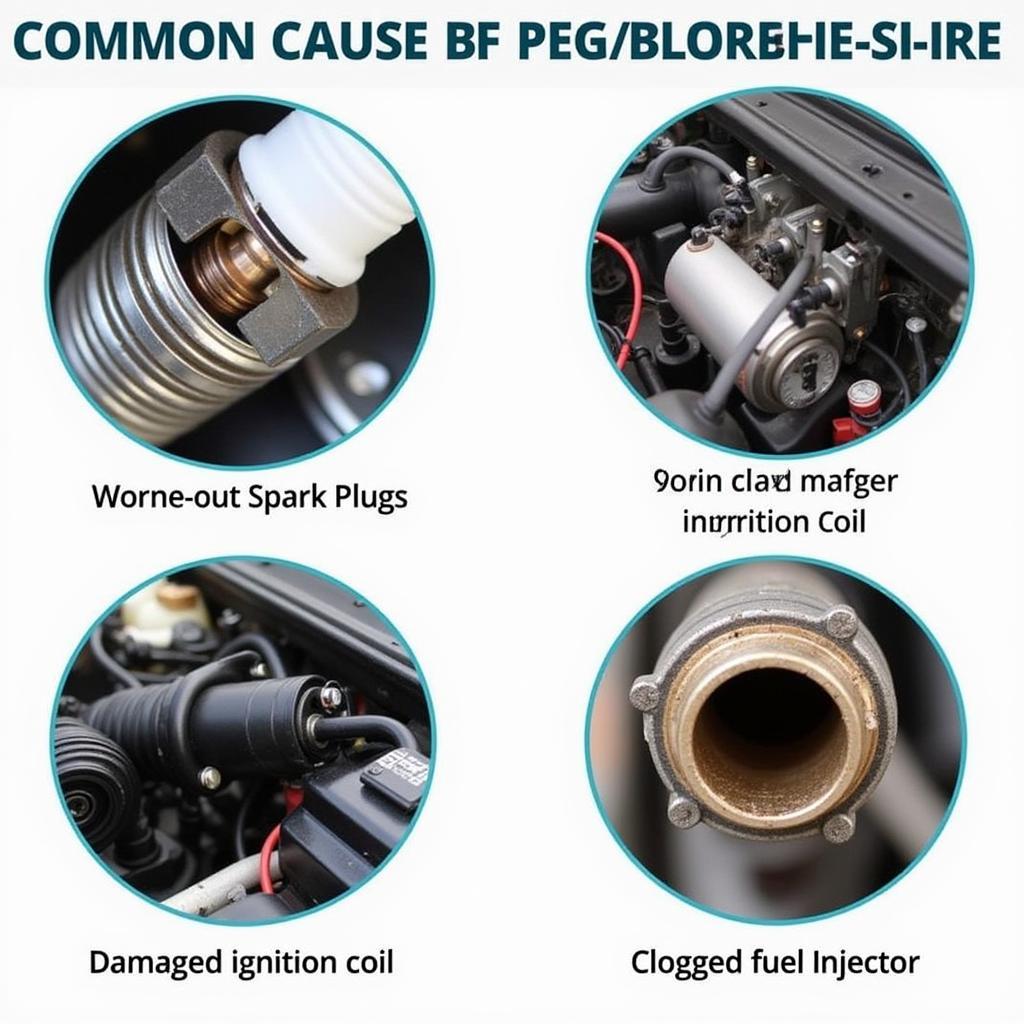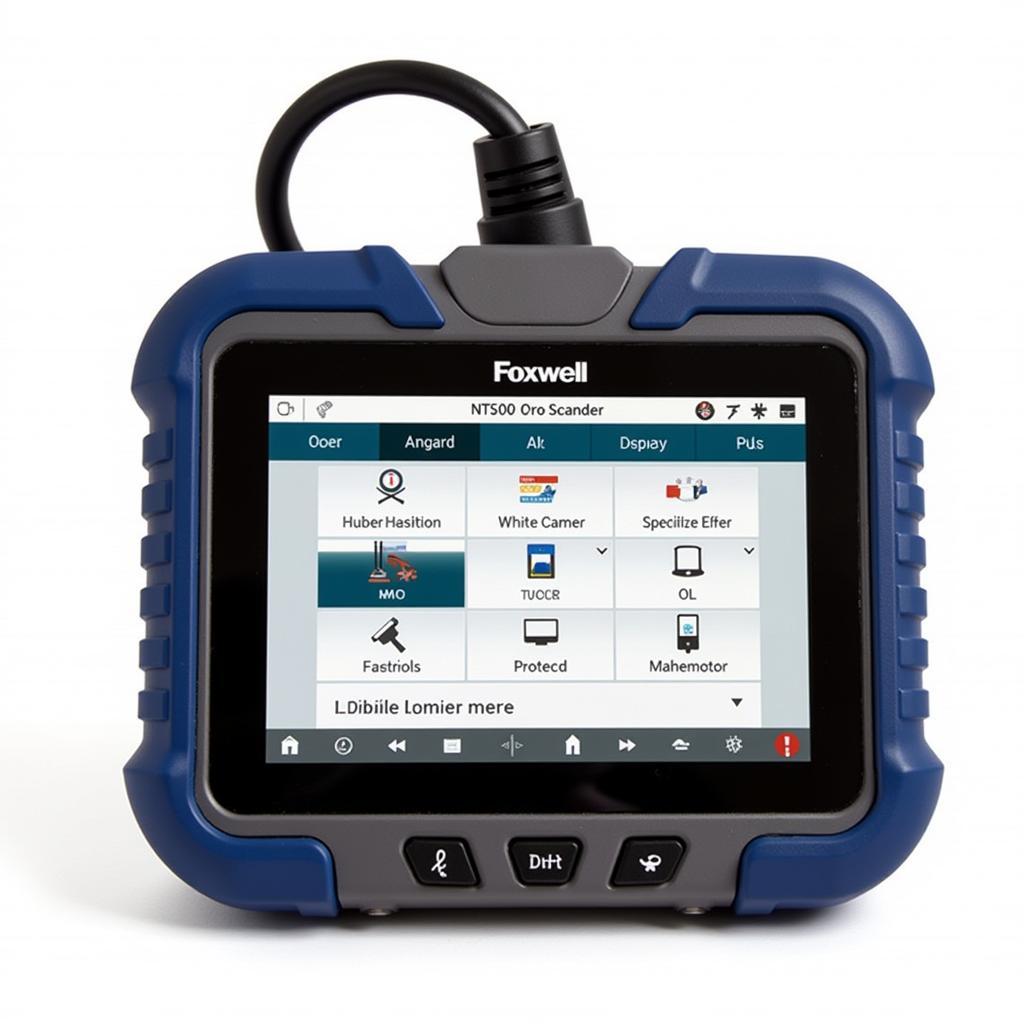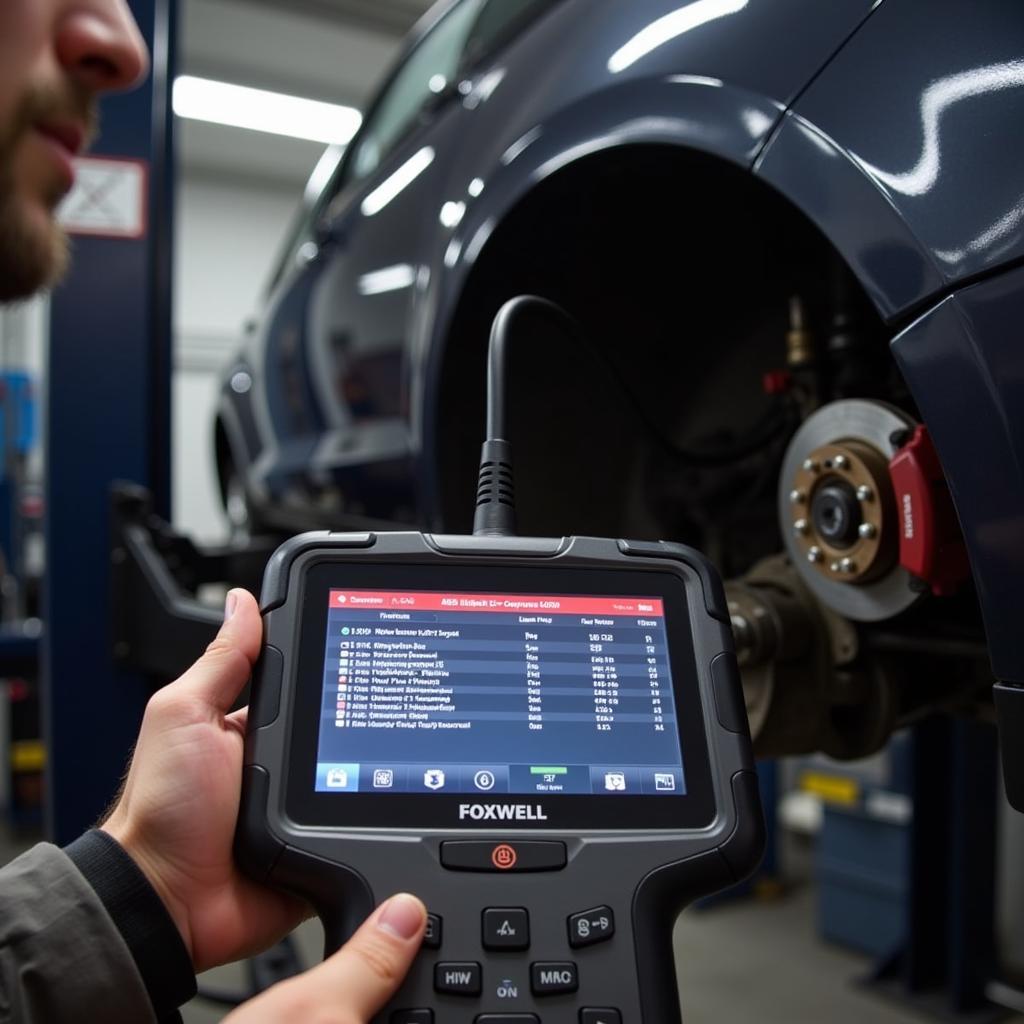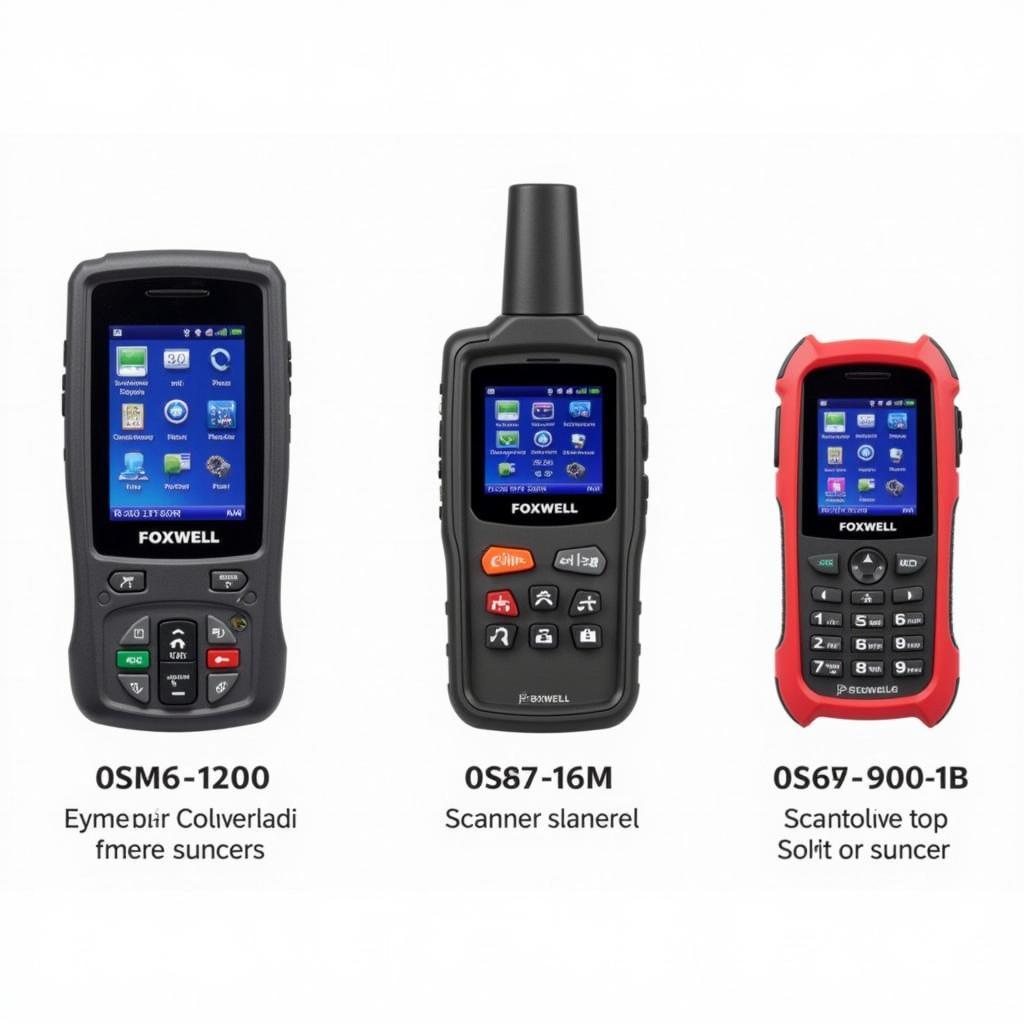A misfire in your engine can be a frustrating and potentially damaging problem. Fortunately, with the help of a Foxwell scanner, you can accurately diagnose the root cause of the issue and get your vehicle back on the road quickly. This comprehensive guide will walk you through the steps of diagnosing a misfire using a Foxwell scanner, empowering you to tackle this common automotive problem.
Understanding Engine Misfires
Before diving into the diagnostic process, it’s crucial to understand what an engine misfire is and what causes it. In simple terms, a misfire occurs when one or more cylinders in your engine fail to ignite the air-fuel mixture properly. This can happen due to a variety of reasons, ranging from faulty spark plugs to issues with fuel delivery or even compression problems.
Common Symptoms of Engine Misfires
Recognizing the symptoms of a misfire is the first step towards diagnosis. Keep an eye out for the following signs:
- Illuminated Check Engine Light: This is often the first indicator of a problem.
- Rough Engine Idle: The engine may vibrate excessively when idling.
- Loss of Power and Acceleration: You might experience a noticeable decrease in engine performance.
- Poor Fuel Economy: Misfires can lead to increased fuel consumption.
- Unusual Engine Sounds: Listen for popping, sputtering, or backfiring noises from the exhaust.
How a Foxwell Scanner Helps Diagnose Misfires
A Foxwell scanner, such as the Foxwell NT624 Elite Masarit, is an invaluable tool for diagnosing engine misfires. It allows you to:
- Read Diagnostic Trouble Codes (DTCs): Foxwell scanners can retrieve specific codes stored in your vehicle’s Engine Control Unit (ECU) that indicate a misfire and potentially point to the problematic cylinder(s).
- View Live Data Stream: Observe real-time sensor readings, such as ignition timing, fuel pressure, and oxygen sensor data, to identify anomalies that might be contributing to the misfire.
- Perform Advanced Tests: Depending on the model, your Foxwell scanner may offer advanced diagnostic functions like cylinder balance tests or injector testing.
Diagnosing a Misfire with a Foxwell Scanner: Step-by-Step Guide
Follow these steps to diagnose a misfire using your Foxwell scanner:
-
Safety First: Park your vehicle on a level surface and engage the parking brake.
-
Connect the Scanner: Locate your vehicle’s OBD-II port (usually under the dashboard on the driver’s side) and connect the Foxwell scanner.
-
Turn on the Ignition: Turn the ignition key to the “On” position without starting the engine.
-
Access Engine Data: Using the scanner’s menu, navigate to the “Engine” or “Powertrain” section.
-
Read DTCs: Select “Read Codes” or a similar option to retrieve the stored trouble codes. Note down any codes related to misfires (e.g., P0300, P0301, P0302, etc.).
-
Clear Codes: After noting the codes, clear them from the ECU’s memory. This step is essential to ensure that any codes that reappear are related to the current issue.
-
Start the Engine: Run the engine for a few minutes to see if the check engine light comes back on.
-
Re-read DTCs: If the light reappears, re-read the codes. If the same misfire codes are present, proceed to further diagnosis.
-
Live Data Analysis: Go to the scanner’s “Live Data” section. Focus on readings for:
- RPM: Check for fluctuations or drops in RPM that might indicate a misfire.
- Ignition Timing: Verify that the timing is within the manufacturer’s specifications.
- Fuel Pressure: Ensure adequate fuel pressure is being delivered to the engine.
- Oxygen Sensor: Look for unusual readings, which could indicate a lean or rich fuel mixture.
-
Isolate the Problem Cylinder(s):
- Many Foxwell scanners, including the Foxwell NT624 Pro All-Systems Diagnostic Scan Tool, provide cylinder-specific misfire data. This information can help you pinpoint the exact cylinder(s) experiencing the issue.
- If your scanner doesn’t offer this feature, you can try disconnecting individual ignition coils or fuel injectors (with the engine off and cooled down) while monitoring the DTCs. If a particular disconnection doesn’t change the misfire code, it likely indicates a problem with that cylinder’s components.
Common Causes of Misfires and How to Fix Them
Once you’ve identified the problematic cylinder(s), you can begin investigating potential causes. Here are some common culprits:
- Spark Plugs: Worn-out or fouled spark plugs are among the most frequent causes of misfires. Inspect the spark plugs for wear, damage, or excessive deposits. Replace them if necessary.
- Ignition Coils: A faulty ignition coil can prevent a spark plug from firing correctly. Check the resistance of the coil using a multimeter and replace it if it’s outside the specified range.
- Fuel Injectors: Clogged or malfunctioning fuel injectors can disrupt fuel delivery to the cylinder. You can use a Foxwell scanner to perform injector tests or have them professionally cleaned or replaced.
- Vacuum Leaks: Air leaks in the intake manifold or vacuum hoses can disrupt the air-fuel mixture. Inspect for cracks or loose connections and repair or replace components as needed.
- Compression Issues: Low compression in a cylinder can result in incomplete combustion and misfires. Perform a compression test to diagnose this problem.
“Understanding how to effectively use a Foxwell scanner can save you significant time and money when diagnosing engine issues,” says John Smith, Senior Automotive Technician at ABC Auto Repair. “It’s like having a mechanic in your pocket.”
Tips for Accurate Diagnosis
- Always consult your vehicle’s repair manual for specific diagnostic procedures and specifications.
- Ensure the battery is fully charged before starting the diagnostic process.
- If you encounter difficulties, don’t hesitate to seek assistance from a qualified mechanic.
 Addressing Common Misfire Causes – Spark Plugs, Ignition Coils, Fuel Injectors
Addressing Common Misfire Causes – Spark Plugs, Ignition Coils, Fuel Injectors
Conclusion
Diagnosing a misfire with a Foxwell scanner is a straightforward process that can empower car owners and technicians to address engine problems efficiently. By following this guide and understanding the common causes of misfires, you can get your vehicle running smoothly again.
For expert guidance and top-of-the-line Foxwell scanners, contact ScanToolUS at +1 (641) 206-8880 or visit our office at 1615 S Laramie Ave, Cicero, IL 60804, USA. We’re here to help you keep your car on the road!



